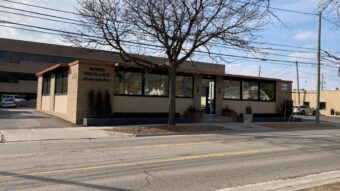The unprecedented growth of the industrial sector over the last decade has brought numerous changes to the real estate landscape. And with no signs of e-commerce letting up, one should expect investment and development of fulfillment/warehouse space to continue unabated for some time.
When it comes to cold storage, however, recent trends are at odds with general industrial activity. Online shoppers are turning to the internet for more food purchases than ever before, yet there hasn’t been a simultaneous boost in spec cold storage facilities to compensate for this added demand.
So why the disparity? A recent Newmark Knight Frank (NKF) white paper plunged into the issue, identifying the room for growth and investment that cold storage buildings have to provide.
Cold storage demand
The market for freezer and cold storage space, both in Chicago and across the country, is in demand. There are a number of factors for this. For one, a strong economy is pushing consumers toward non-discretionary food items. That alone requires more warehouse space for food as it ships from manufacturers to grocery stores, but consumers are also cutting out the supermarket to some extent as meal delivery services like Blue Apron, HelloFresh and Plated become more popular.
And retailers have gotten the hint. Walmart, Target, Costco and others are bypassing wholesalers, opting to purchase goods directly from manufacturers. Some of these outlets also offer home delivery—another reason for an increase in cold storage facilities.
“A lot of these freezer and cooler buildings are predicated on the similar advances of e-commerce,” said Corey Chase, senior managing director, NKF. “There are more and more people, especially millennials, that are ordering food online because it’s easy to do.”
A study earlier this year by the Food Market Institute and Nielsen predicts that by 2024, 70 percent of consumers will spend a combined $100 billion annually online for groceries. The pace of change and adoption is outrunning the firms’ initial predictions, and will likely only go up.
Finally, pharmaceutical sales over the internet are also on the rise. With some of these medications, such as insulin, requiring refrigeration, there is further demand for cold warehousing facilities.
Cost to develop
The demand is there, yet there have been very few cold storage facilities built on spec. The barrier to entry, as is likely not a surprise, is money, as the cost to construct a cold storage facility is much higher than a conventional industrial warehouse.
In fact, buildout prices for these properties can be up to four times higher. While the average range for a standard industrial building is between $40.00 to $50.00 per square foot, freezer/cooler construction storage spaces average between $150.00 to $250.00 per square foot.
Cold storage facilities require added insulation in the walls and the roof. The flooring systems can be drastically different as well, as some freezer/cooler spaces have systems built into the slab to keep the floors cold. That’s all before even considering the mechanical upgrades that will be required to manage the temperature within the space.
The higher construction price tag makes it clear why there have been so few spec cooler facilities. Without a committed tenant, developers are risk-averse to getting stuck with a very expensive property if it does not lease right away.
“If a developer builds a cold storage building at a certain cost and they unfortunately have to sit on it for a while, that’s not a pretty situation for them,” Chase said. “As great as it would be to have a tenant move into a spec building for a developer, the chances of having all the specifications meet their needs are slim, because everyone has different specifications as it relates to their cold storage use.”
What are the options?
The existing inventory of freezer/cooler space in Chicago totals only 7.3 million square feet, and that includes owner-occupied space. In fact, cold storage buildings make up less than 1 percent of the total Chicago industrial stock.
This low inventory, coupled with the higher costs of construction, has driven cold storage rents higher. And due to the dearth of opportunities, NKF recommends that tenants seeking this type of space set aside enough time for what could be a lengthy search.
For those looking to lease, there is of course minimal significant capital required up front. However, space is difficult to find and what’s out there might not meet specifications, might not be up to date and/or might not meet future requirements.
It makes sense, then, that those with the capital to do so have been owner-occupiers building to suit. A lack of product makes it a strong, long-term investment option and there won’t be any market volatility effect on rent.
Freezer and cooler warehouse facilities remain a property subtype where there is still room for growth and investment. Though they are an extremely specialized and expensive real estate product, they are a critical part of the transportation and delivery of perishable items—a market that is only projected to grow.



